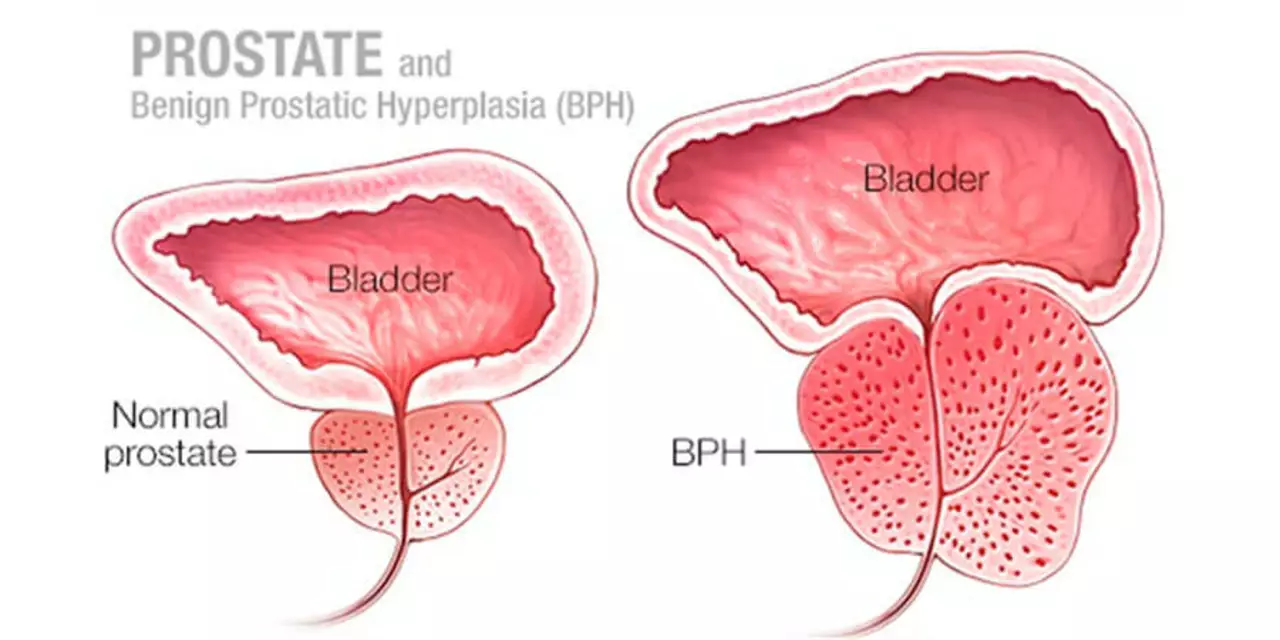Understanding Benign Prostatic Hyperplasia (BPH)
Before diving into the treatment options for benign prostatic hyperplasia, it is important to have a clear understanding of what BPH is. Benign prostatic hyperplasia, or BPH, is a non-cancerous enlargement of the prostate gland. The prostate is a small gland in men that is responsible for producing the fluid that nourishes and transports sperm. As men age, the prostate often grows larger, which can cause it to press against the urethra and cause various urinary symptoms.
BPH is a common condition, especially among older men. By age 60, more than half of all men have some degree of BPH, and by age 85, that number increases to 90 percent. It is important to know that BPH is not prostate cancer and having BPH does not increase your risk of developing prostate cancer. However, the symptoms of BPH can be uncomfortable and even debilitating, which is why it is essential to seek treatment if you are experiencing any discomfort.
Watchful Waiting: Monitoring Your BPH Symptoms
One of the first treatment options for BPH is known as watchful waiting. This approach involves closely monitoring your symptoms and making lifestyle changes to help manage them, without undergoing any invasive treatments. Watchful waiting is usually recommended for men with mild to moderate symptoms that do not significantly affect their quality of life.
During this period of watchful waiting, you may be advised to make certain lifestyle changes, such as reducing your intake of caffeine and alcohol, exercising regularly, and maintaining a healthy weight. You should also schedule regular checkups with your healthcare provider to monitor your prostate health and discuss any changes in your symptoms. If your symptoms worsen over time or begin to interfere with your daily life, your healthcare provider may recommend more aggressive treatment options.
Medication: Managing BPH Symptoms with Prescription Drugs
If your BPH symptoms become more severe, your healthcare provider may prescribe medications to help manage them. There are several different types of medications that can be used to treat BPH, including alpha-blockers, 5-alpha reductase inhibitors, and combination therapy.
Alpha-blockers work by relaxing the muscles surrounding the prostate and bladder, which can help to improve urine flow and reduce symptoms. 5-alpha reductase inhibitors work by shrinking the prostate gland, which can help to alleviate symptoms and prevent further prostate growth. Combination therapy involves using both alpha-blockers and 5-alpha reductase inhibitors to provide more effective symptom relief.
It is essential to discuss the potential side effects and risks of these medications with your healthcare provider before beginning treatment. Some common side effects of BPH medications include dizziness, fatigue, and sexual side effects, such as erectile dysfunction or decreased libido.
Minimally Invasive Procedures: A Less Invasive Approach to BPH Treatment
If medications are not providing adequate relief of your BPH symptoms, your healthcare provider may recommend a minimally invasive procedure. These procedures are less invasive than traditional surgery and typically have a shorter recovery time. Some common minimally invasive procedures for BPH include transurethral microwave thermotherapy (TUMT), transurethral needle ablation (TUNA), and prostatic urethral lift (UroLift).
TUMT involves using microwave energy to heat and destroy prostate tissue, which can help to reduce prostate size and relieve symptoms. TUNA uses radiofrequency energy to destroy prostate tissue, which can also help to reduce prostate size and alleviate symptoms. UroLift is a procedure that involves placing small implants in the prostate to lift and hold the enlarged prostate tissue away from the urethra, which can help to improve urine flow and reduce symptoms.
As with any medical procedure, there are potential risks and side effects associated with minimally invasive BPH treatments. It is essential to discuss these risks with your healthcare provider before undergoing a procedure.
Surgical Treatment Options: When More Intensive Intervention is Required
In some cases, more invasive surgical treatment options may be necessary to effectively manage BPH symptoms. Some common surgical treatments for BPH include transurethral resection of the prostate (TURP), transurethral incision of the prostate (TUIP), and simple prostatectomy.
TURP is the most common surgical procedure for BPH and involves removing a portion of the prostate tissue using a small instrument inserted through the urethra. TUIP is a less invasive alternative to TURP and involves making small incisions in the prostate to help improve urine flow. Simple prostatectomy is a more invasive procedure that involves the removal of the entire prostate gland and is typically reserved for men with very large prostates or other complicating factors.
As with any surgery, there are potential risks and side effects associated with surgical BPH treatments. It is crucial to discuss these risks with your healthcare provider before undergoing surgery.
Alternative and Complementary Therapies: Exploring Non-Traditional BPH Treatments
Some men with BPH may choose to explore alternative and complementary therapies to help manage their symptoms. These treatments may include herbal supplements, acupuncture, and biofeedback. While some men may find relief from these alternative treatments, it is essential to keep in mind that they are not a substitute for medical treatment and should be used in conjunction with traditional BPH therapies.
It is also important to discuss any alternative or complementary therapies with your healthcare provider before beginning treatment, as some supplements and therapies may interact with medications or have potential side effects.
In conclusion, there are a variety of treatment options available for men with benign prostatic hyperplasia. From watchful waiting and lifestyle changes to medications, minimally invasive procedures, and surgery, it is essential to work closely with your healthcare provider to find the best treatment plan for your unique needs and symptoms. Remember always to keep the lines of communication open with your healthcare provider and to ask questions about any treatment options you are considering.


Write a comment